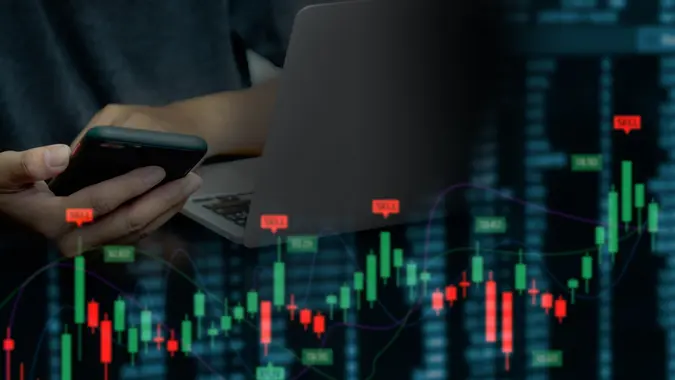How the S&P 500’s Reign Could End — and What It Means for You

Commitment to Our Readers
GOBankingRates' editorial team is committed to bringing you unbiased reviews and information. We use data-driven methodologies to evaluate financial products and services - our reviews and ratings are not influenced by advertisers. You can read more about our editorial guidelines and our products and services review methodology.

20 Years
Helping You Live Richer

Reviewed
by Experts

Trusted by
Millions of Readers
As a smart investor, you know the S&P 500 matters a great deal in shaping how the stock market is perceived, which can have major implications for how people view the health of the overall U.S. economy. Basically, the S&P 500 (short for Standard and Poor’s 500) is an index that tracks the stock performance of 500 of the largest publicly traded companies in the U.S.
Unsurprisingly, the S&P 500 has been a dominant force in global economics and one of the most commonly followed equity indices. But what if it lost some of its dominance? How should a savvy investor adjust to such a shift? Fortunately, some experts have already pondered these questions.
What Goes Up Must Eventually Come Down
Peter Lazaroff, chief investment officer at Plancorp Wealth Management, has been bracing for the S&P 500 to lose its dominance for a while now. His reasoning is simple: History shows that no market leader stays on top forever. Eventually, even the strongest bull market comes back down to earth.
On his podcast, he challenged listeners to be prepared for this inevitability: “The question isn’t whether U.S. stocks will slow down — it’s when. And when that happens, will your portfolio be ready?”
Lazaroff is concerned by the number of experts who assume the S&P 500 will keep performing at the same level in perpetuity, even going so far as to pooh-pooh the importance of global diversification. He’s quick to remind his audience that markets are cyclical.
“And with valuation spreads between U.S. stocks and international markets continuing to widen, the long-term opportunity for global diversification has never been greater,” he said.
In other words, it’s time to do a little globe-trotting when it comes to selecting stocks.
Why International Markets Are Good for Diversification
Anticipating arguments about the ongoing power of the S&P 500, Lazaroff points to past periods when an all-American portfolio would have served you poorly.
Does the period from 1929 to 1945 ring a bell? Even as recently as 2000 to 2012, international stocks, emerging markets, and bonds outperformed U.S. markets.
He asks how you’d feel if you were fully invested in U.S. stocks during one of these rough periods — a rhetorical question, of course, because you would not be feeling good.
“This is where diversification plays a critical role,” he said. “It’s not about chasing winners — it’s about ensuring your portfolio can weather all market conditions.”
Diversification May Require Some Patience
When you start diversifying your portfolio with international stocks or ETFs, Lazaroff warns that you shouldn’t expect constant sunshine or rainbows. Parts of your portfolio may underperform at times — so much so that you’ll be tempted to dump them.
But, like most difficult things, it’s worth it.
“When international stocks become a permanent part of your portfolio, you stop viewing them as an ‘alternative’ and start seeing them as an essential component of a long-term strategy,” he said.
How to Start Investing in Global Markets
If you’re new to international investing, don’t feel you have to attempt to wade through and analyze stocks in unfamiliar markets. Exchange-traded funds (ETFs) that focus on international stocks can be a simple way to gain exposure while spreading out risk. Look for broad-based international ETFs, such as those tracking the MSCI ACWI (All Country World Index) or emerging markets.
Some brokerage platforms even offer tools to compare international ETFs based on performance, fees, and country exposure. Start small, stay diversified, and think long term. You’ve got this.
More From GOBankingRates
 Written by
Written by  Edited by
Edited by 

























